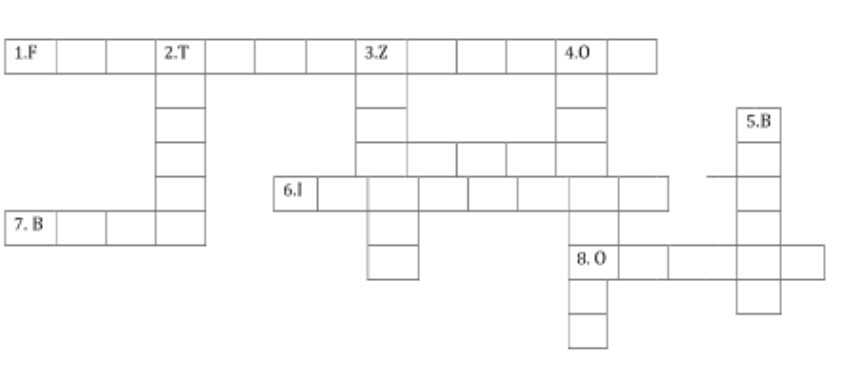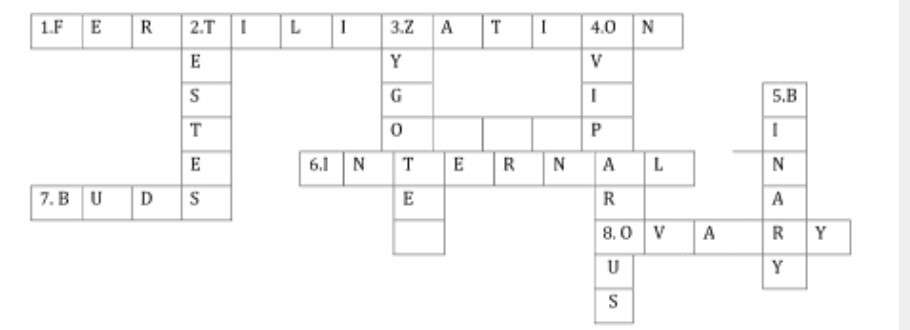Science
(www.olympiadsuccess.com)
Chapter 9: Reproduction in Animals
Class: VIII
NCERT Solutions
Question 1
Explain the importance of reproduction in organisms.
Answer 1
Question 2
Describe the process of fertilization in human beings.
Answer 2
There is sexual reproduction in human beings. Male reproductive organs produce sperms (male gametes) while the female gametes produce ova (female gametes). The sperms are ejected inside female bodies where they fuse with ovum and forms zygote (called internal fertilization). The zygote begins to develop into an embryo which attaches to the female uterus wall. The embryo further multiples into many cells and develops further into a small baby called foetus.
Question 3
Choose the most appropriate answer:
(b) A tadpole develops into an adult frog by the process of
(i) fertilization.
(ii) metamorphosis.
(iii) embedding.
(iv) budding.
(c) The number of nuclei present in a zygote is
(i) none. (ii) one. (iii) two. (iv) four.
Answer 3
Question 4
Indicate whether the following statements are True (T) or False (F):
(a) Oviparous animals give birth to young ones. ( )
(b) Each sperm is a single cell. ( )
(c) External fertilization takes place in frog. ( )
(d) A new human individual develops from a cell called gamete. ( )
(e) Egg laid after fertilization is made up of a single cell. ( )
(f) Amoeba reproduces by budding. ( )
(g) Fertilization is necessary even in asexual reproduction. ( )
(h) Binary fission is a method of asexual reproduction. ( )
(i) A zygote is formed as a result of fertilization. ( )
(j) An embryo is made up of a single cell. ( )
Answer 4
(a) Oviparous animals give birth to young ones. (False)
(b) Each sperm is a single cell. (True)
(c) External fertilization takes place in frog. (True)
(d) A new human individual develops from a cell called gamete. (False)
(e) Egg laid after fertilization is made up of a single cell. (True)
(f) Amoeba reproduces by budding. (False)
(g) Fertilization is necessary even in asexual reproduction. (False)
(h) Binary fission is a method of asexual reproduction. (True)
(i) A zygote is formed as a result of fertilization. (True)
(j) An embryo is made up of a single cell. (False)
Question 5
Give two difference between a zygote and a foetus.
Answer 5
Question 6
Define asexual reproduction. Describe two methods of asexual reproduction in animals.
Answer 6
Asexual reproduction is a mode of reproduction in which only one parent is involved to reproduce offspring. In asexual reproduction, the offsprings produced are exact copies of their parents.
It is generally observed in very small sized organisms. Binary fission, Budding, Fragmentation etc. are the examples of asexual reproduction.
Question 7
In which female reproductive organ does the embryo get embedded?
Answer 7
In walls of the uterus.
Question 8
What is metamorphosis? Give examples.
Answer 8
The transformation of the larva into an adult through drastic changes is called metamorphosis. Metamorphosis is a biological process which involves sudden and abrupt changes in the body structure of the animal by cell growth and differentiation. It is generally observed in amphibians and insects. Examples: frogs and butterflies.
Question 9
Differentiate between internal fertilization and external fertilization.
Answer 9
|
S.No |
Internal Fertilization |
External Fertilization |
|
1. 2. 3. |
Fusion of male and female gametes take place inside the body. Less numbers of eggs are produced. Examples: Cow, Dog, Human etc. |
Fusion of male and female gametes take place outside the body. Large numbers of eggs are produced. Examples: Frog, Fishes etc. |
Question 10
Complete the cross-word puzzle using the hints given below
Across
Down

Answer 10
Across
Down

Yearlong program for Olympiads preparation & to build necessary skills for future.
Explore More
Time to mark your calendar with the upcoming Olympiads exam schedule.
Explore More
Take your Olympiad preparation to next-level by taking LIVE Classes.
Explore More
Assess your performance by taking topic-wise and full length mock tests.
Explore More
Online tuitions for international compeitions like SASMO, SEAMO, etc for Grades 1-11.
Explore More